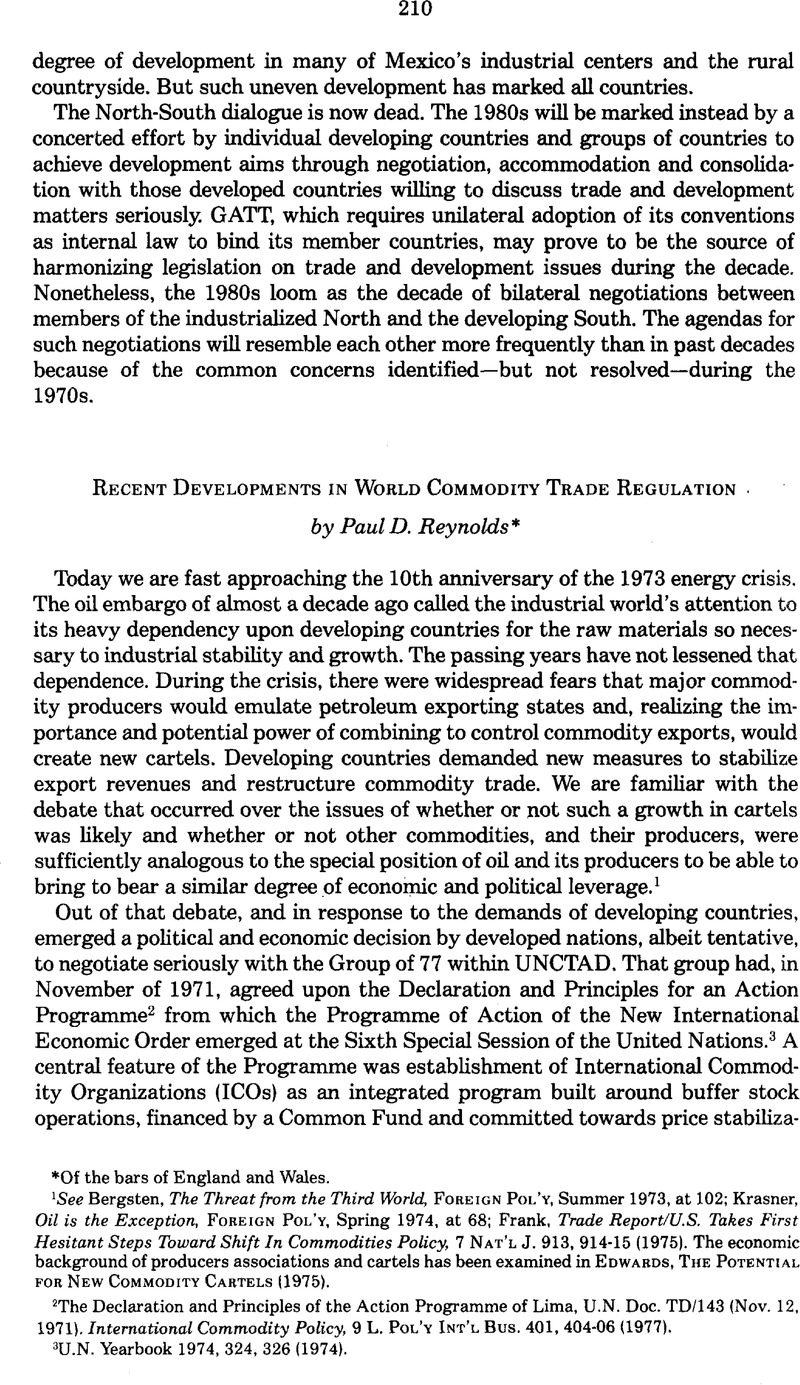No CrossRef data available.
Published online by Cambridge University Press: 28 February 2017

1 See Bergsten, The Threat from the Third World, FOREIGN POL'Y, Summer 1973, at 102; Krasner, Oil is the Exception, FOREIGN POL'Y, Spring 1974, at 68; Frank, Trade Report/U.S. Takes First Hesitant Steps Toward Shift In Commodities Policy, 7 NAT'L J. 913, 914-15 (1975). The economic background of producers associations and cartels has been examined in EDWARDS, THE POTENTIAL FOR NEW COMMODITY CARTELS (1975).
2 The Declaration and Principles of the Action Programme of Lima, U.N. Doc. TD/143 (Nov. 12, 1971). International Commodity Policy, 9 L. POL'Y INT'L Bus. 401, 404-06 (1977).
3 U.N. Yearbook 1974, 324, 326 (1974).
4 UNCTAD Board, An Overall Integrated Program for Commodities,V.N. Doc. TD/B/498 (1974).
5 U.N. Doc. TD/IPC/CF/Conf. 24. This was endorsed by the General Assembly on October 1, 1980.
6 TD/B/C.l/iee of December 9,1974 at 1 65.
7 Parkinson, The United Nations Integrated Programme for Commodities, 1981 CURRENT LEGAL PROBS. 260, 266.